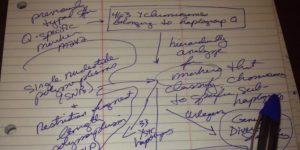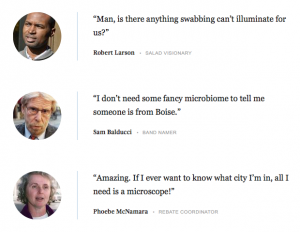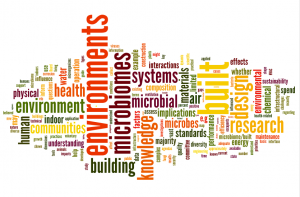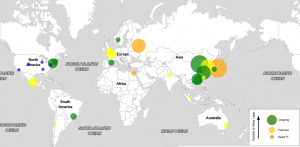There is a report out from the American Academy of Microbiology that is based on the “Microbiology of the Built Environment” colloquium they hosted in September 2015. The report summary is below: Built environments are the structures that humans create to shelter from the outdoors and provide spaces for living, working, playing, and getting places. …
The six finalists for the Open Science Prize were announced today. The Open Science Prize is “The Open Science Prize is a collaboration between the Wellcome Trust, the US National Institutes of Health (NIH) and the Howard Hughes Medical Institute to unleash the power of open content and data to advance biomedical research and its …
From vaccinations to climate change, getting science wrong has very real consequences. But journal articles, a primary way science is communicated in academia, are a different format to newspaper a… Source: How to read and understand a scientific paper: a guide for non-scientists This article, by Jennifer Raff, is definitely worth a read and I …
I just got pointed to this letter written by the President of the Alfred P. Sloan Foundation Paul Joskow on “Research Integrity and Reproducibility” and it is definitely worth a read. It is available as part of the Sloan Foundation 2014 Annual report. It starts on pXiii. It is also available via Research Gate. And …
Videos of talks from the recent DOE-JGI User Meeting have been posted. There is also a Storify wrap up of the meeting: [<a href=”//storify.com/doe_jgi/2016-doe-jgi-genomics-of-energy-environment-meetin” target=”_blank”>View the story “2016 DOE JGI Genomics of Energy & Environment Meeting” on Storify]
Ok I saw this Tweet and I thought it sounded cool: Autonomous Sewer Robots Live-Stream Neighborhood Microbiome Data – Nickolaus Hines https://t.co/fr8Xfs8XxQ pic.twitter.com/e5mDTGU44Y – Elisabeth Bik (@MicrobiomDigest) May 5, 2016 And definitely worth looking into in more detail. And, well, after looking I still think it is cool but not quite what the headline suggests. …
I have nothing to add to this. The Onion picks up on the recent study by Caporaso and colleagues A study that swabbed office buildings in major cities found that the bacterial profile of the swabs corresponded to their location, suggesting that cities each have their own “bacterial fingerprint.” What do you think? Source: Study: …
On April 11 there was a meeting in Washington DC that was part of an effort from a new study being conducted by the National Academies of Science, Medicine, and Engineering on “Microbiomes of the Built Environment”. Videos and slides from the meeting have now been posted. I have compiled them below. In addition, I …
Guest post by Melina Bautista (@qmbautista) and Ameet J. Pinto (@watermicrobe). The provision of safe drinking water relies primarily on disinfection as a cornerstone for pathogen control. Since its full-scale implementation in the early 20th century, it has become the standard final treatment step to inactivate microorganisms in most drinking water treatment plants around …
One afternoon while making my way through another DNA extraction, I was eavesdropping over the lab benches, per usual, trying to keep my mind occupied. I overheard my project manager and another undergraduate discussing an unusual project. “Do you want to contact the Sacramento authorities to get clearance to swab the light rail, because talking …









